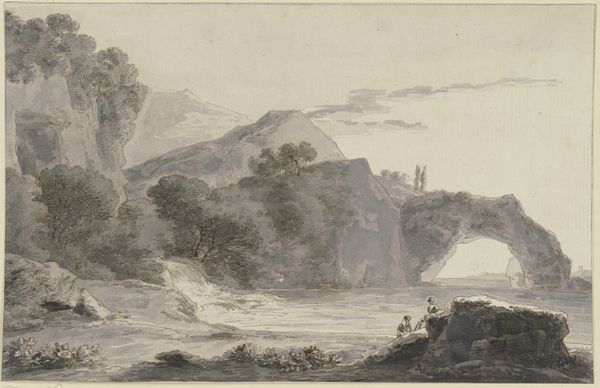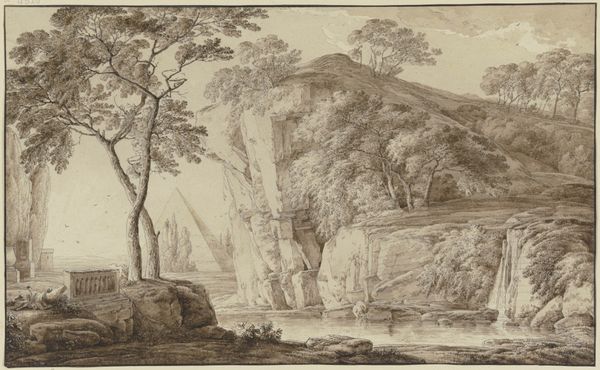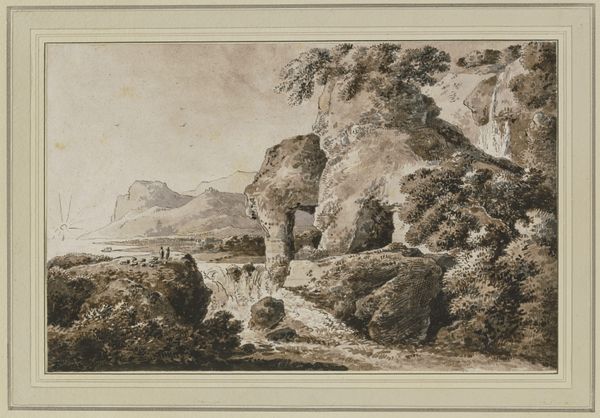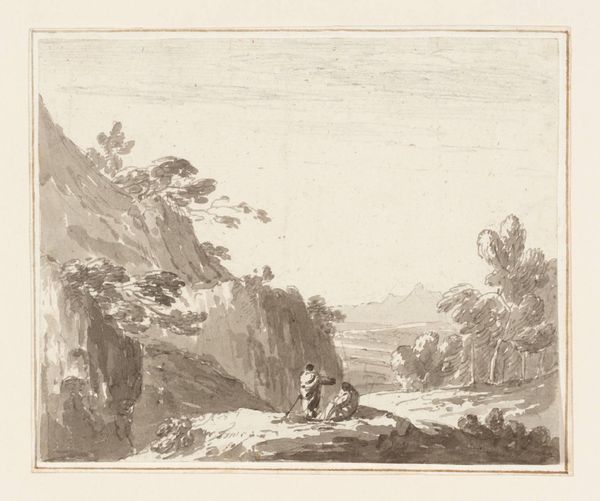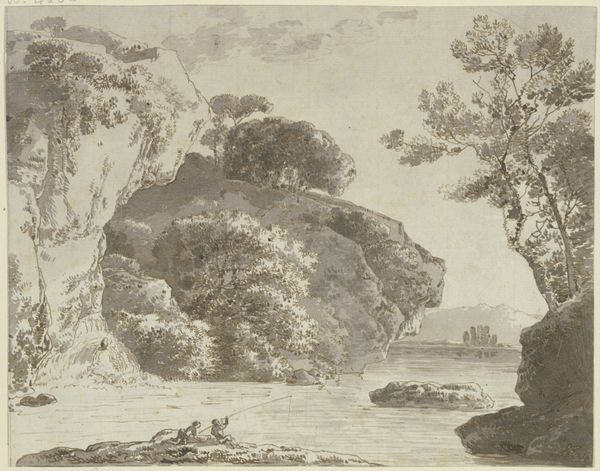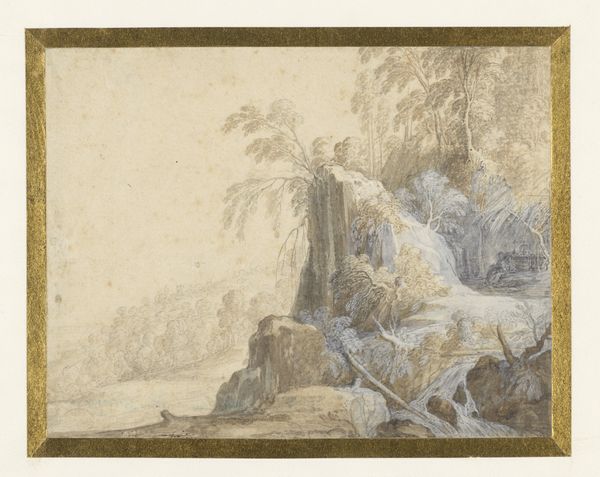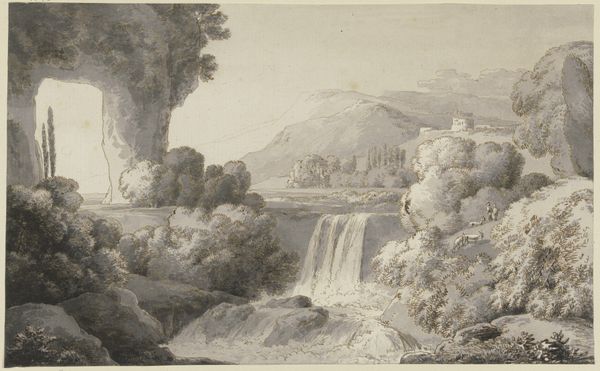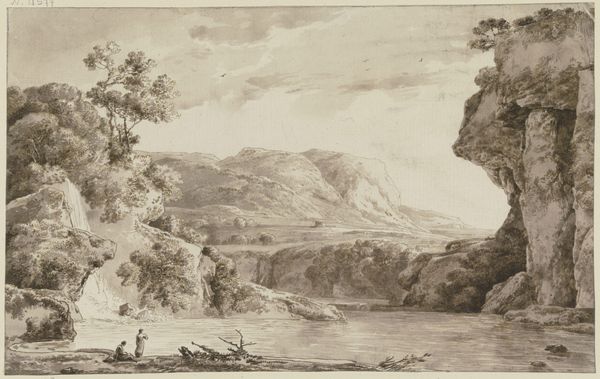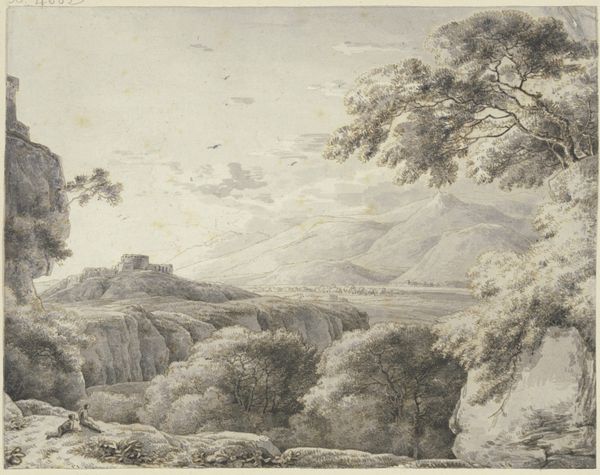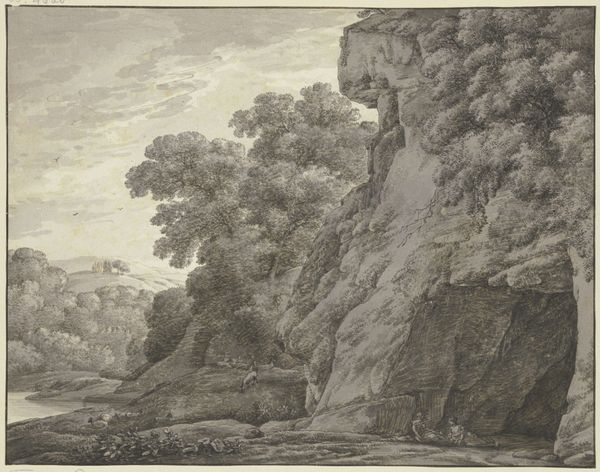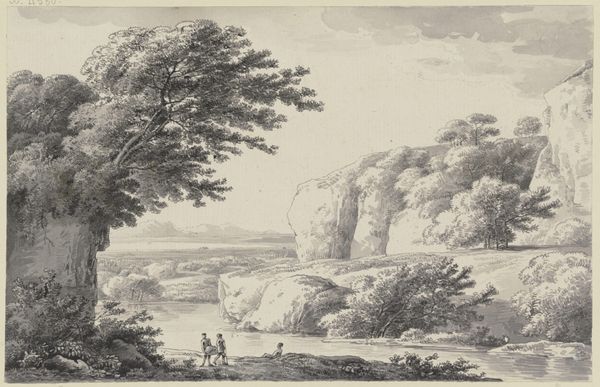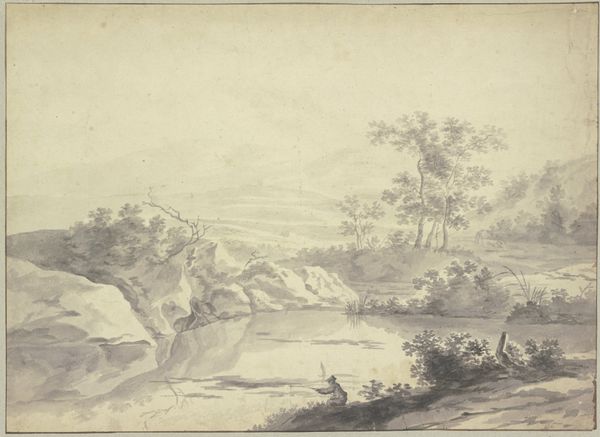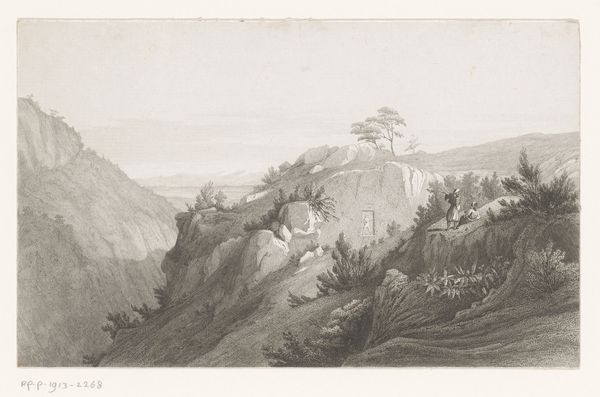
Italienische Landschaft, im Vordergrund zwei Hirten und ihre Herde
0:00
0:00
drawing, mixed-media, paper, watercolor, ink, chalk
#
drawing
#
mixed-media
#
water colours
#
neoclassicism
#
landscape
#
paper
#
watercolor
#
ink
#
romanticism
#
chalk
#
mixed medium
#
mixed media
#
watercolor
#
realism
Copyright: Public Domain
Editor: This mixed-media drawing on paper, "Italian Landscape with two Shepherds and their Herd", attributed to Friedrich Nerly, has such a serene quality. I'm curious about the idyllic depiction of rural life here. What do you see in this piece? Curator: This work invites us to consider the historical and social context surrounding representations of the pastoral. The idealized Italian landscape became a popular trope, particularly in the Romantic and Neoclassical periods. Nerly, working within these traditions, subtly participates in constructing a visual narrative. But whose narrative is it, and for whom is it intended? Consider how it might reflect and perhaps perpetuate a specific view of labor, leisure, and the relationship between humanity and nature. How do you see those power dynamics at play? Editor: It feels almost like a stage. The shepherds seem positioned for our viewing pleasure rather than actively working. Curator: Exactly! Think about how these images circulated. Who consumed them? These works become not just depictions, but active agents in shaping ideas about national identity, class, and the very idea of "landscape" as something to be owned and admired, not necessarily lived within or struggled over. What is natural, and what is constructed in this supposedly neutral vision of the Italian countryside? Editor: So, by idealizing this rural scene, it's almost masking the social realities and perhaps even the hardships of the actual lives of shepherds in 19th century Italy? Curator: Precisely! It encourages us to examine the work critically, acknowledging the choices Nerly made – what he included, what he omitted – and the cultural implications of those choices. Recognizing that art doesn't exist in a vacuum, and instead, it is often reinforcing pre-existing hierarchies. Editor: I see it differently now. Thank you; that reframing is really helpful. Curator: My pleasure! Considering those critical angles will, in turn, create a deeper understanding of not just the artwork itself, but its impact on our collective understanding of the past.
Comments
No comments
Be the first to comment and join the conversation on the ultimate creative platform.
